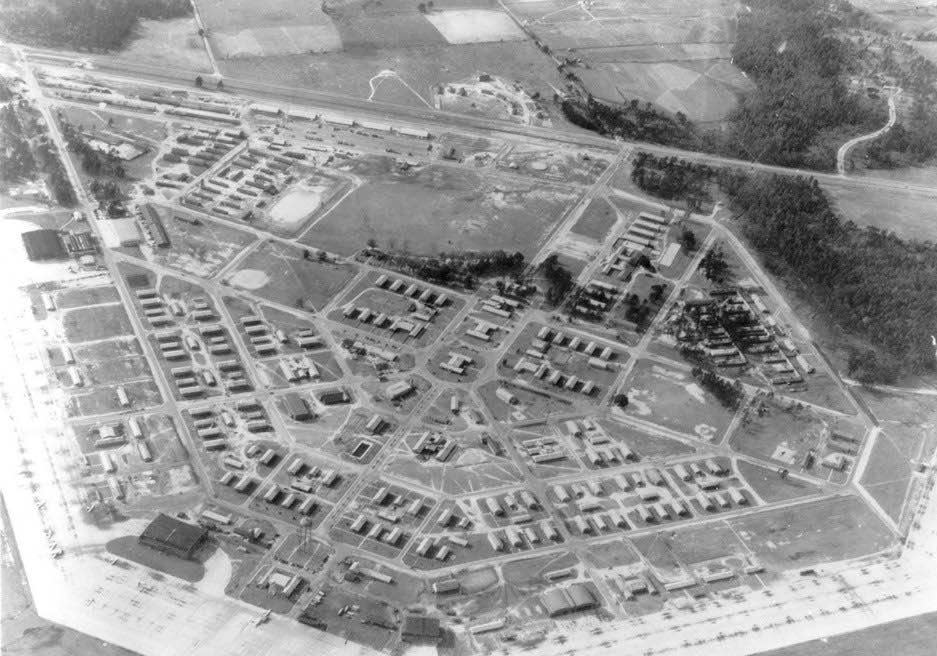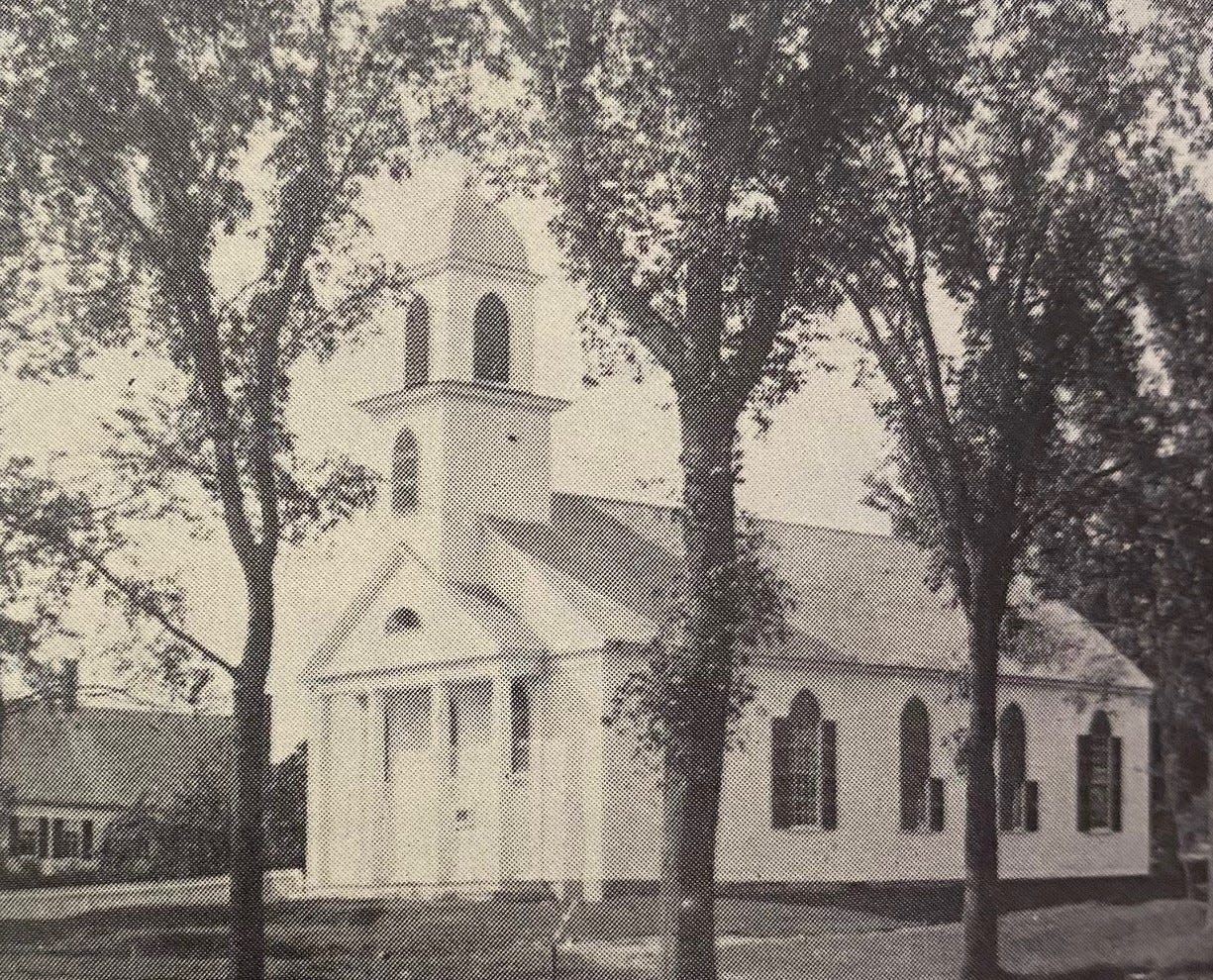Remembering World War II Heroes: Robert Hodgen of Hubbardston
HUBBARDSTON – Moody Field, located in Valdosta, Georgia, began as an Army Air Corps pilot training base during World War II. With the potential of a war looming in the future, local leaders of Lowndes County looked for a way to join the national defense efforts.
The field was named for U.S. Army Maj. George Putnam Moody, a 1929 graduate of the U.S. Military Academy at West Point, who was killed in Wichita, Kansas, in May of 1941. Ironically, the announcement of the dedication of the field was made on Dec. 6, 1941 – they day before the Japanese attack on Pearl Harbor.
While Moody Field would be a training locale for many Aviation Air Corps cadets, it was also the location of many stateside casualties occurring with young pilots taking off or landing.
There were many tragic stories which grew out of the training facility, with one of the most devastating occurring on July 14, 1942 when four AT-17 aircraft took off from Moody Field on a night flying exercise. Sometime later, reports in Florida noted four aircraft out of the field being located as crashed, killing seven RAF trainees and an American instructor.

Due to severity of the loss which occurred that day, there seemed to be few details which would emerge out of Moody Field with future training mishaps.
One such accident which was shrouded in mystery, occurred a little over two months later, resulting in the death of a Hubbardston pilot.
This is the continuation of the series Remembering Local World War II Heroes.
Lt. Robert Hodgen (1917-1942)
Robert Johnston Hodgen Jr. was born Sept. 1, 1917 in Greenfield to the Rev. Robert J. and Anna (Walsh) Hodgen. The family moved to Hubbardston when the Rev. Hodgen became the pastor of the Congregational Church from 1931 to 1936.
“From what I was told, he was a real fire and brimstone preacher,” noted his grandson John Hodgen, whose father, Joseph, was Robert’s brother. “He preached in Hubbardston, as well as in the Gloucester area.”
Robert attended Gardner High School and graduated in 1935. From there, he got a degree at the Stockbridge School of Agriculture at the University of Massachusetts and later got a job in the landscaping field. Shortly after the Japanese bombing of Pearl Harbor, he entered the military.
By that time, he and several other family members relocated to the area of Nassau County in New York where he enlisted in the Aviation Cadet Air Corps. While attending Army Air Force Advanced Flying School at Moody Field in July of 1942, he received his wings.
A little over two months later, Lt. Hodgen was reported killed in the early morning of Sept. 25, 1942 at Moody Field.
According to an Army report, the Beechcraft AT-10BH Wichita #41-9330 crashed upon takeoff. There were no further details of the accident.
“He had qualified to fly on these training planes and there was a young pilot who needed to gain more experience, so he and Robert went up in the plane for another practice flight,” John Hodgen noted. “My uncle went up and agreed to sit in the co-pilot seat to help this kid qualify and just tried to help this kid out. It was just a stunning loss for our family.”

Donald I. Ekstrom of Newman Grove, Nebraska, was the aviation cadet who was in the plane with Hodgen when it went down.
Whether or not the young and inexperienced Ekstrom was the pilot is unknown and was never officially recorded, probably due to the military’s unwillingness to draw more negative attention to the many mishaps occurring at Moody Field.
According to site AAIR (Aviation Archaeological Investigation and Research), in the page for September 1942 USAAF Stateside Accident Reports, there were a total of 19 crashes out of Moody Field alone that month. Three of those crashes resulted in deaths.
On Sept. 11, Capt. Dallas L. Morris and another passenger were killed in a routine training flight out of Moody, with the crash occurring near Nashville, Tennessee.
Eight days later on Sept. 19, Victor Holman of the Royal Air Force became one of nine British pilots killed during the war while in a pilot training program at Moody Field.
With those two fatal crashes, coupled with the other devastating losses which occurred in the aforementioned crashes in July, it’s likely the Air Corps didn’t want any more bad news coming out of the Georgia training field.
The notice of Hodgen’s death in the Sept. 26, 1942 edition of The Gardner News, stated that he “was killed early this morning at Moody Field… No details of the accident are known.”
“It seems almost natural that they would want to keep another fatal plane crash like this quiet,” said John Hodgen.
It was especially distressing to Robert’s mother, Anna, who had six other sons serving in the military at the time.
“Everybody was so afraid to bring that up because my grandmother was so devastated by this,” said John Hodgen, who wasn’t born until four years after his uncle’s death. “Nobody ever wanted to bring it up in front of her.”
The oldest, Isaac, served in the U.S. Navy, followed by George, a master sergeant in the U.S. Army, Alden, who was in the U.S. Army, Woodrow, a sergeant in the U.S. Army, Edmund, in the U.S. Army Air Force, and John, a tech sergeant in the U.S. Army.
“I remember when we visited our grandmother it seemed like going to a chapel. Her window had the stars indicating how many sons she had serving in the war,” said John. “The gold one was for the one who didn’t come back.”
Joseph, who was the father of John Hodgen, was the only one exempt from the service due to a childhood bout with polio.
“My father tried to join the Canadian Army with the hunched back that he ended up having, but he just couldn’t pass the physical,” he said, adding that his father did contribute to the war effort by working at Pratt & Whitney in Hartford, Connecticut, making the Vaught Corsair airplanes with the fold-up wings to be placed on aircraft carriers.
“He never forgave himself for not going into the war,” he added. “It was hard for him to bear the fact that every one of his brothers was in the war, and he never felt it was fair. I know he really struggled with the fact that he was the only brother that didn’t go.”
At the time of Robert’s death, his parents were living in the town of Lanesville on the North Shore near Gloucester.
Lt. Hodgen was buried in the West Leyden Cemetery in Leyden. He was posthumously awarded the United States Aviator Badge, the World War II Victory Medal, the American Campaign Medal and the Army Presidential Unit Citation.
“From what I’ve heard from the family, out of all eight of them, Bobby was the best,” said John Hodgen. “The others were just as stubborn as mules, but they always said Bobby was the best of the litter, the handsomest by far, the nicest one and the one with the most potential.”
Comments and suggestions for Remembering Local World War II Heroes can be sent to Mike Richard at mikerichard0725@gmail.com or in writing Mike Richard, 92 Boardley Rd. Sandwich, MA 02563.
This article originally appeared on Gardner News: Hubbardston's Robert Hodgen died in WWII Air Corps pilot training
